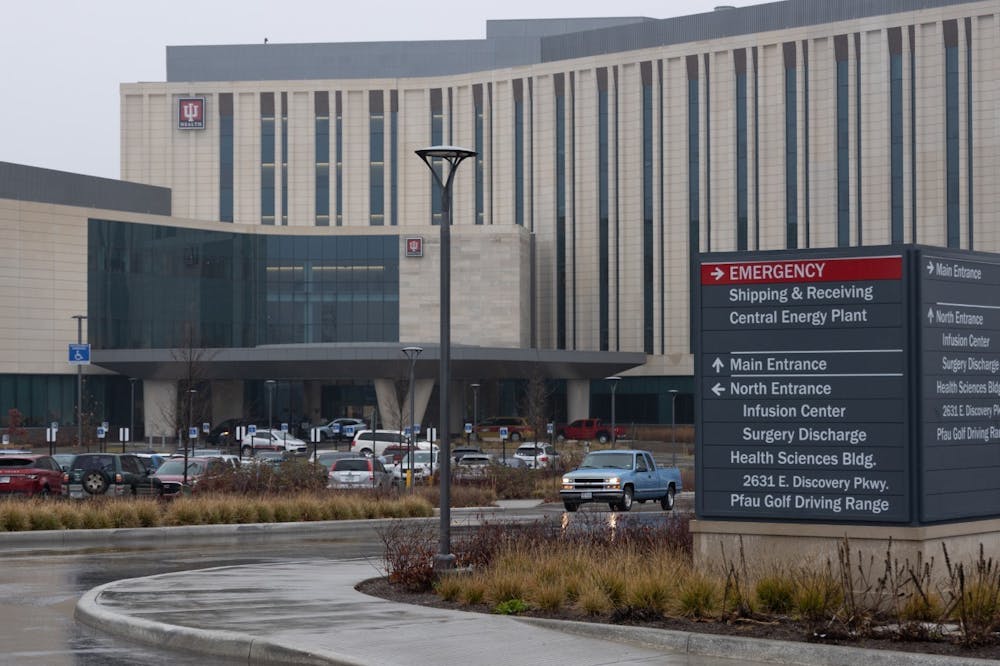Last year IU Health donated $400 million to the IU School of Medicine. Dr. Jay L. Hess, the dean of the school of medicine, said the funds will be dispensed over three years and over multiple projects including support for residency and fellowship opportunities in the hopes that more graduates decide to work in Indiana in healthcare and academic roles, according to a Herald-Times article.
With the new funds, the school of medicine can reinforce its iDREAM program — one that works to increase the diversity among the residents working towards academic medicine careers. A third of the money, he said, will go into recruiting department faculty in subjects including surgery, radiology and pathology. Hess said in the article that the School of Medicine will also be expanding research to help treat diseases.
Related: [IU Health’s $416 million gift to IU under scrutiny]
Christina Griffiths, an IU School of Medicine spokesperson, said in an email that since IU Health’s establishment in 1997, it has had a partnership with the school of medicine.
“Many of our IU School of Medicine faculty are also employed by IU Health, where they provide clinical care for patients,” she said in an email. “Our students complete clinical rotations at various IU Health hospitals across the state.”
Given that IU Health provides funding to the school regularly, she said this grant replaces what would’ve been given over the next three years. Griffiths said the funds will also go into expanding the current MD/Ph.D. program and supportive services for current medical students in terms of scholarships, mental health services and academic advising. The funds saved for research will go towards laboratory renovations and clinical trial infrastructure.
“As the largest medical school in the country, we look forward to continuing our work providing high-quality medical education for students, residents and fellows,” Griffiths said in an email. “We will also continue being a global leader in Alzheimer’s disease, personalized medicine, traumatic brain injury, LGBTQ+ health and many other areas of research.”
Lisa Tellus, another IU Health spokesperson, said in an email, the $400 million represents its commitment to supporting the school’s mission and partnership.
“To have the best doctors in the nation, and to give Hoosiers access to cutting-edge medicine, we support the education and research mission of the IUSM, including recruitment, diversity, equity and inclusion,” Tellus said in the email.
Related: [Experts predict increases in depression in winter months due to seasonal affective disorder]
According to a WFYI article, Indiana has the seventh highest hospital-related expenditures in the country. The article attributed the conclusion to a RAND 4.0 study, which also said Hoosiers pay almost 300% more than what Medicare pays for the same services.
By 2025, IU Health said it was committed to bringing the costs of healthcare down to national averages. Despite inflationary pressures, Tellus said in an email, the company finished the first year of its affordability plan and will continue to work towards reducing pricing.
She said in an email that it received a five-star rating for price transparency according to the Price Transparency Scorecard made by Turquoise Health, a health technology company.
“While there is no one-size-fits-all solution to healthcare costs, providers, insurers, regulators and lawmakers must work together to ensure all Hoosiers have affordable access to high-quality levels of care,” Tellus said in an email.
Matt Bell, the chief policy strategist at Hoosiers for Affordable Healthcare, said H4AC works to push for policy reform on the price of hospital care for Hoosiers. The coalition was founded in 2019, he said, in response to the results of the RAND 3.0 study. At the time, it showed Indiana had the sixth most expensive hospitals in the country.
Over the next three years, he said they’ve continued to push for legislative policies that will help address the cost of care in Indiana. Upon learning about the RAND 4.0 study, Bell said H4AC worked to bring attention to the issue and increase their digital footprint by reaching out to folks across the state.
“IU Health has probably been the most responsive health system in the state to its credit,” Bell said.
He said IU Health announced their commitment to lowering its prices to the national average by 2025. They were one of the only hospitals in the country to make that kind of commitment.
“We certainly appreciate the leadership that our state's largest health system is shown,” Bell said. “We wish that others would follow them as the market leader.”
He said H4AC’s relationship with hospitals can be adversarial at times because the organization is always trying to preserve the money in Hoosiers rather than hospital cash reserves.
In the long run, Bell said he thinks such funds could be better used if returned to the patients.
“Having said that, IU School of Medicine is a tremendous academic institution,” Bell said. “We have a low number of physicians per capita in Indiana and IU School of Medicine will be critical to addressing that need.”
However, there wasn’t public acknowledgment of the record-setting gift until now, around 11 months after the donation, which raises questions, he said.
IU Health built a reserve fund that’s 50% larger than the state of Indiana cash reserves, he said supports all the states ongoing operations.
Bell said the girth of the surpluses that IU Health has built protects and inoculates it against any long-term concern.




